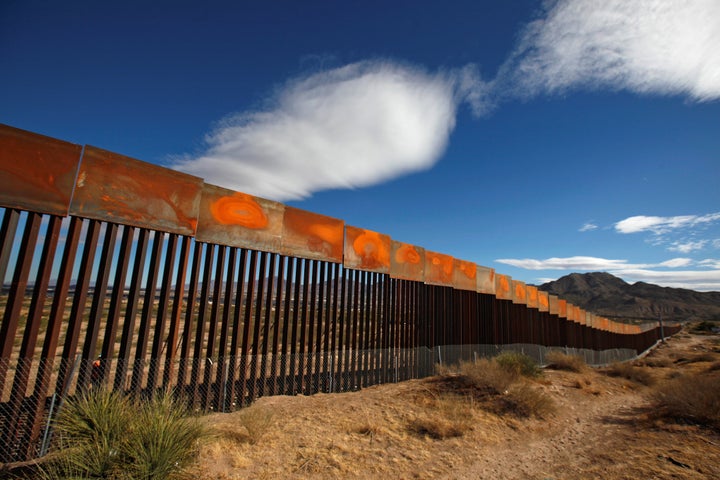
The American poet Robert Frost once wrote, “Good fences make good neighbors.” It would seem that President Trump took this view to heart when he promised to build a wall across the entire U.S.-Mexico border during his 2016 campaign.
At the time, I, like many others, took his declaration and his promise that he would “make Mexico pay for it” as merely campaign rhetoric aimed at gaining media attention. Now it appears that this was not just electioneering on Trump’s part, and he seems committed to following through on his campaign pledge. Current circumstances beg the question: Is the wall the answer to the immigration issue?
Putting aside, for the moment, normative concerns of whether or not building a wall is moral, just or xenophobic, the problem with the proposal is that it is unlikely to achieve the president’s goal of reducing illegal immigration and creating a more secure border. Like many other recent immigration reform proposals, the wall is far too simple of a solution to this complex problem. Three lessons drawn from our experience in managing migration make it clear why the wall will not work:
Lesson #1: Economic migration is driven by both push and pull factors. The disparity in wage and/or job opportunities between two countries creates the financial incentive for migration. The greater this disparity, the greater the incentive. Such disparities are acute between the U.S. and Mexico, as well as between the U.S. and other Latin American countries further south. A wall, however formidable, does nothing to alter this basic migration calculus.
Lesson #2: When the push and pull pressures remain unchanged, migration flows invariably adjust to barriers placed before them and find new paths of entry. This lesson was made clear by our experience with Operation Gatekeeper during the mid-1990s. In 1994, this program erected a 15-mile steel fence along the U.S.-Mexico border at the San Diego-Tijuana port of entry. Although statistics on apprehensions in the years following the construction showed a declining number of border crossers, such declines were offset by rising apprehensions in the areas east of the Gatekeeper zone. Taken in aggregate, apprehensions statistics taken across the border showed little sign of decline.
So wouldn’t the president’s proposal to extend the wall across the entire length of the border make sense? Not necessarily. As border security was ramped up in the 1990s, migrants increasingly turned to smugglers to gain entry to the U.S. This not only contributed to an increase in the number of sophisticated criminal groups operating along the border, but interactions between border patrol agents and smugglers became more violent as the financial stakes involved rose. We could expect both trends to grow, and neither is in America’s national security interests.
Lastly, the wall does nothing to address the issue of out-of-status migrants — those who enter legally and overstay their visa.
Lesson #3: Immigration and border policies have strong implications for foreign policy. While it seems clear that the strong symbolism of the wall as a bastion of American sovereignty resonated with many voters, it has generated equally visceral, and overwhelmingly negative, responses in Mexico. In particular, Trump’s insistence that Mexico will pay for the wall’s construction struck a chord with Mexican policy makers. Former Mexican president Vicente Fox tweeted, “Neither myself nor Mexico are going to pay for his racist monument.” In the minds of many Mexicans, Trump’s bombastic rhetoric raises the specter of the neighborhood bully that lies to the north. So what are the potential costs and risks of antagonizing Mexico?
Deteriorating bilateral relations with our third largest trading partner would likely push Mexico to develop closer relations with other suitors. China has already shown a strong interest in filling any void left by any rift between the U.S. and Mexico. This separation would likely result in reduced bilateral cooperation in key areas, including anti-terrorism and drug trafficking. Moreover, a reduced willingness for cooperation would virtually eliminate America’s ability to influence the push factors in Mexico that drive migration in the first place. As such, migration pressures could likely increase rather than decrease, thus defeating the primary aim of the president’s plan.
President Trump’s wall might stop some undocumented crossers from entering the country and deter some others from even trying. However, these gains must be weighed against the costs that such a wall incurs — costs that may, in fact, dwarf those directly associated with its construction.
Taken in the context of the three lessons outlined above, it seems clear that the wall’s costs would far outweigh its benefits. If the president is serious about reforming America’s immigration system, it is incumbent on his administration to address the issue much more comprehensively. The first step in that process is to get up to speed on the complex dynamics of migration and on the lessons that recent policies and their effects provide.
